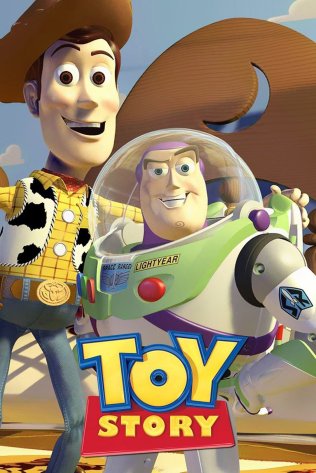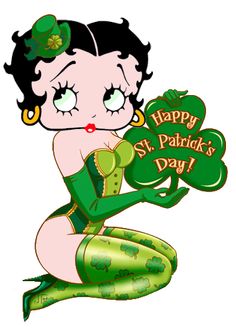
The information presented in this blog will look at some of the various inventions and Innovations which has contributed to the development of animation over the years.
The information presented in this blog will look at some of the various inventions and Innovations, which has contributed to the development of animation over the years.
Over the decade, the art form has been used to store information throughout generations. Early century, information has been stored in various forms these include paintings, drawings, and writings, on wood, stone, scrolls, books bronze and gold materials. These provide a wealth of information about the past, which can be very useful.
The early animation began as simple drawings, shown in the form of the flipbook. When the pages are flicked in quick succession, it provides the appearance of a mini movie. This was then developed into the stage of 2-D drawings and then into 3-D drawings
The FlipBook.
Charlie Emile Raynaud 1893 invented the Praxinoscope that used turning mirrors, to reflect animated images as reflection. The reflection rate of the images was between 10 to 15 minutes.
in 1600 The Magic Lantern is one of the earliest inventions in the history of animation. It operates similarly to a slide projector, by showing tiny images, which is projected onto a wall or canvas so others can view it.
1600, it has been around for several years, it is not with certainty as to who made the first Magic Lanterns, however; it is believed that one of the earlier copies of the Magic Lantern is believed to have originated around the and was know as the Sturm Lantern, there are many magic lanterns in existence.
In 1829 Joseph Plateau invented the Phenakistoscope. Using the technique of different images, which are slightly different from each other. When positioned in a circular open tube with a handle to turn, the images viewed through the slits of the disc appeared continuous as it moved around the tube.
Isaac improved this technique. He created rows on a circular open tube, attached to a handle, to create movements. (88 words)
The phenakistoscope used a spinning disc. This was attached vertically to a handle, which held a disc in the center. The disc held a series of drawings. As it turned, it showed phases of the animation, via a cut out through a series of equally spaced radial slits as the disc spins. The scanning of the slits across the reflected images kept them from blurring together, creating a rapid succession of images which appeared as a single moving picture.
Its development has greatly aided the development of animation over the year. The scanning of the slits across the reflected images kept them from blurring together, allowing the user to view the images in rapid succession; thereby creating the appearance of a moving picture. The phenakistoscope uses the concept of the persistence of vision principle to create an illusion of motion, which was the reflected onto a mirror inside.[148 words)
The Stroboscope
The stereoscope was invented by, Charles Wheatstone, in 1838. The device created a unique presentation by differentiating the viewing of an image by the use of the left eye as opposed to that of the right eye. The device could speed up or slow down the image as well as develop depicting left-eye and right-eye views of the same scene, as a single three-dimensional image; Or generate a much faster view or make the scene slower
The Stroboscope was developed to generate a slower or movement of objects. The stroboscope uses a rotating disc with spaced holes in between the speed of the disc changes, as it is synchronized with the disc to create movement. Over the years, this discovery has impacted on many developments such as films research and testing.
The Zoetrope
The earlier image of what might have been a Zoetrope is a recording of animation painted on an earthenware bowl. It is believed that this was recorded over 5000 years ago, in Iran. It showed the image of a goat jumping up to eat leaves of a plant. This appeared to be one of the earliest pictures of animation ever recorded. This bowl is decorated with a series of images portraying a goat jumping toward a tree and eating its leaves. John Bate discovered an even earlier development of what appeared to be a zoetrope. He described the gadget as a circular wheel, which turned inside a glass. It consisted of picture cards on the four spokes of a wheel, which was turned around by heat inside a glass or horn cylinder. (132 words)
The praxinoscope was an animation device, the successor to the zoetrope. Charles-Émile Reynaud invented it in France in the year 1877. Like the zoetrope, it used a strip of pictures placed on the inner surface of a spinning cylinder.
The praxinoscope improved on the Zoetrope by replacing its narrow viewing slits with an inner circle of mirrors, placed so that the reflections of the pictures appeared more or less stationary in position as the wheel turned. Someone looking in the mirrors would, therefore, see a rapid succession of images producing the illusion of motion, with a brighter and less distorted picture than the zoetrope offered.
This brought the technique of many images that are slightly different in a row on a circular open tube that is attached to a handle the person that wants to view the moving images would spin the handle to make them move. Through slits just above the images around the tube, the person would be able to see these images move.
Thomas Edison invented the motion picture camera. A Stroboscope is used to make a moving object appear to be moving slowly. It basically works with a rotating disc with evenly spaced holes in the line of sight between the viewer and the moving object as before. The rotational speed of the disc is changed and is then able to become synchronized with the movement of the ball say, making it slow this has been named the Stroboscope effect They are used in many forms of research as well as films testing the stresses of machinery
The Enchanted Drawing
A man named James Stuart Blackton used animation techniques to produce a short film. It documented the drawing process of characters, without ever showing the artist; this made it seem that the drawings simply appeared.
Stuart Blackton 1906
The Humorous Funny Faces
A short animation created by Anglo-American film producer James Stuart Blackton that proved hugely influential in the development of animated films in America. The film comes six years after his equally groundbreaking the enchanted drawing
The first animated film to be recorded on standard picture film. w\as the first animated film saw the beginning o silent films. One such feather was. The Humorous phase of Funny Faces by is a silent animated cartoon by James Stuart Blakton
In 1829 Sir Isac Newton and his breakthrough in animation. This was followed by Joseph Plateau’s invention of the Phenakistoscope. This invention and the technique it uses is still around today.
In 1908 Thomas Edison, as well as Edward Muybridge, developed the Leland Stanford Race Horse
film passes wheels producing motion like viewing.
1908 Thomas Edison Edward Muybridge In 1872 Leland Stanford a race horse owner who had also been Governor of California discussed with other socialites, when whether or not when a horse galloped in order to prove did all four of the horse’s hooves leave the ground at the same time. This research impacted on the world of photographic The Image showed that when a horse leaped, the human brain perceived the movement of images.
In 1872 Leland Stanford a racehorse owner who had also been governor of California discussed with other socialites when a horse galloped all four of the horse’s hooves leave the ground at the same time… Using individual images of a horse moving this debate could be answered as the images were put together illustrating what happens. Many different images of the movement were created using this idea from animals to people doing all type of action sequences to show movement.
Eadweard Muybridge
The Image showed that when a horse leaped there becomes a leap the human brain perceived movement of images. In 1872
The result
The results settled the debate as it was proved that all four of the horse’s hooves, do Leave the ground all at once.
MAGIC LANTERN
The Magic Lantern is an image projector using pictures on sheets of glass. Since some sheets contain moving parts, it is considered the first example of projected animation.
The Magic Lantern, which uses hand drawn, images or drawn on sheets this is then projected o sheets of glass. Which moves. Creating projected animation.
The Magic Lantern is a small device used by showmen to entertain bystanders, by displaying semi-translucent slides. The slides at initial conception were not yet fully animated until around the end of the 17th century.
In 1887 H. W. Goodwin created animation with his invention of the Celluloid Film. This film with the use of gum cotton and gum camphor.
The Kinetoscope is an early exhibitor for motion pictures during the early centuries. Thomas Edison designed it for the viewing of films in 1899. The Kinetoscope has a viewing hole at the top through which audience can look to see the performance. It was deemed as the first cinematic video. It creates an illusion of movements created by a perforated sequential film, as it passes over a light source with a high shutter speed. French inventor Louis Le Prince, who built on the idea developed by Thomas Edison, further developed this. The project was further enhanced by one of his employees William Kennedy Laurie Dickson in 1892. Dixon along with Edison further developed the Kinetoscope which became the innovation for the motion picture camera for commercial and another usage; this was its first publicly demonstrated at the Brooklyn Institute of Arts and Science on May 9, 1893.
Celluloid Film
In 1887. H.W. Goodwin invented nitrate celluloid film, which is made of gum cotton and gum camphor.
1919
FELIX THE CAT
Musical Mews and Feline Follies introduced Felix the Cat—often considered the first animated movie star.
1920
The most popular character and series of this time, Felix the Cat, started on the Feline Follies show from Sullivan’s studio. Otto Messmer not only created Felix, but he did the stories and directing on a schedule that made one film every two weeks.
1928
Disney did two Mickey Mouse animations, Plane Crazy and Galloping Gaucho without a distributor. He was working on the third animation, Steamboat Willie, when motion picture sound arrived. So he added sound to the third Mickey with the Powers sound system. It was not the first sound film though; Terry’s Dinner Time was released on Sept. 1st, but with unsynced sound. Steamboat Willie was the first sound animated film with synced sound. It made Mickey an international star, and launched the Disney studio of today. It also ushered in the new age of sound for animation.
1987
THE SIMPSONS
The Simpsons is an American adult animated sitcom created by Matt Groening for the Fox Broadcasting Company. It is the longest-running American sitcom, the longest-running American animated program, and in 2009 it surpassed Gunsmoke as the longest-running American scripted primetime television series.
1982
Tron, A Disney feature has 15 minutes of computer animation for 235 scenes at a cost of $1,200 per second.
1988
Who Framed Roger Rabbit was released. Getting over $300 million, and it proved that animation, at least when combined with live action, was not limited to a children’s audience.
- Tin Toy Directed by John Laseter, won the Academy Award. The film was produced by Pixar, it was the first computer animated film to win.
- Cartoon Network broadcasts their film in over 2 million homes, by 1995 that figure rose to over 22 million.
- The Lion King, Disney’s highest grossing pictures to date, was released.
1995 DreamWorks studio formed.
1995, Toy Story became the first fully computerized animated feature, ever to be released. It took in more money at the box office than any other film in.
- Shrek from Dream Works Studios Feature animation won the first ever Oscar for an animated feature they beat out Pixar/Disney’s Monsters Inc.
2013
Elsa from the movie Frozen was made with 420,000 CGI threads, which was 20x more than the threads used for Rapunzel from tangled. It required the making of a new program called Tonic.
The film industry has evolved over the year. 1941 saw another featured film from Disney as it focused is attention on one of its famous character’s Mickey mouse.
There were new development and adjustments within the
Disney industry with characters such as Mickey Mouse and Cinderella.
The modern technology was invented to help improve and inject new techniques and stimulation into the Disney projects. A new 35mm projector was purchased to help
NEW TECHNOLOGIES
The multiple cameras specialize in creating motion pictures. The camera uses traditional animation processes. It can create a three-dimensional effect, although it is not actually stereoscopic.
At the University of Utah, and a man named Ed Catmull developed a method of creating computer-generated movies. It used a scripting language.
In 1972, Apple Computer Company produced a method which can be used to create 3-D films, and in 1995 Toy Story was released as the first full-length 3-D film.
1993 The animation industry, not the end, now we have 5-D animation.
Conclusion
The new equipment now used motion captures, for creating computer games. It also contained vertical strap for use on standard performance screen. Each strip was 7/8 inch[-22mm wide] these were angled to face the audience. Hironobu Sakaguchi was the first photorealistic computer animated film. This film has greatly raised the bar for animation.
Fig 2.
Over the decayed, art form has been used to store information throughout generations. Early century, information has been stored in various forms these include paintings, drawings and writings, on wood, stone, scrolls, books bronze and gold materials. These provide a wealth of information about the past which can be very useful.
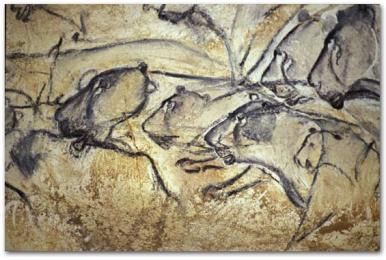 [4]
[4]
The early animation began as simple drawings, showed in the form of flip book. This occurs when the pages are flicked in quick succession, providing the appearance of a mini movie This was then developed into the stage of 2-D drawings and then into 3-D drawings. Today, animations has moved from simple black and white drawings and films to sophisticated 3-D coloured movies. [9]
The Flip Book
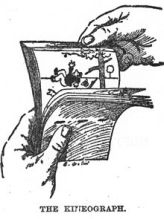
Fig [9]
Animation is about creating moving images. One of the earliest method of creating moving images in the early centuries was via the Magic Lantern.[10]
In 1829 Joseph Plateau invented the the Phenakistoscope. Using the technique of different images which are slightly different from each other. When positioned in a circular open tube with a handle to turn, the images viewed through the slits of the disc appeared contineous as it moved around the tube.
This invention was endorsed by Sir Isaac Newman who sought to improve on the discovery.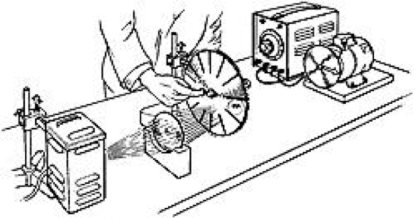
Fig[10]
This technique was improved on by Isaac, who created rows on a circular open tube, attached by a handle, to create movements.
Fig[11]
1893, Charlie Emile Raynaud 1893, invented the Praxinoscope which uses turning mirrors, to reflect animated when the image is reflection. The reflection of the images rate of between 10 to 15 minutes. to create a moving images. [11]
The Magic Lantern is one of the earliest invention in the history of animation. It operates similarly to a slide projector, by showing tiny images which is projected onto a wall or canvas. so others can view it.
Fig [12]
The Magic Lantern
The Magic Lantern has been around for many years. It is not a certainty as to who made the first Magic Lanterns however, it is believed that one of the earlier copy of the Magic Lantern is believed to have originated around the 1600 and was know as the Sturm Lantern, there are many magic lanterns in existence.[12] see some of the examples below.
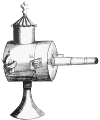
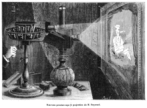

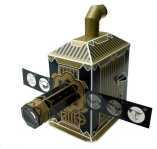
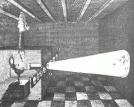
Fig [13] Fig [14] Fig [15] Fig [16] Fig [17]
The Magic Lantern is recognize along with the Camera Obscure The Magic Lantern has been around since the late 16oo century and it has been used to provide education, entertain as well as to mesmerise its audiences for hundreds of years.
, the phenakistoscope could only practically be used by one person at a time.
Other early Inventors which has aided the development of animation include discoveries by Joseph Plateau developed 1829. the technique of his invention which has a slight difference in the row of the circular tube. [11]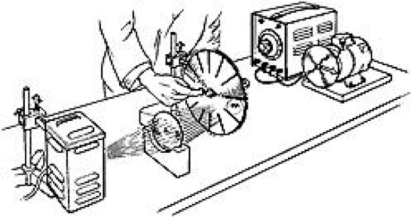
Fig[18]
The Phenakistocope
Belgian born Joseph Plateau created the Phenakistoscope in 1841. This brought the technique of many images that are slightly different in a row and the circular opening tube. There is now an handle attached to enable easy operation for viewing. As the moving images turns it can be viewed through the slits above slits in the tube. [11]
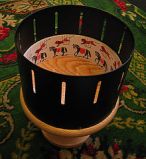
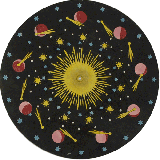
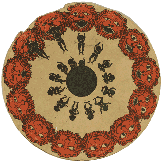

Fig [19] Fig [20} Fig [21] Fig[22]
The phenakistoscope uses a spinning disc,. this is attaches vertically to a handle. which holds a disc in the centre. the disc, hold a series of drawings. As it turns, it shows phases of the animation, via a cut out through a series of equally spaced radial slits. as the disc spins. The scanning of the slits across the reflected images kept them from blurring together, creating a rapid succession of images which appeared as a single moving picture.
The Phenakistoscope or the , The optical toy. It was invented by Joseph Plateau in 1841. Its development has greatly aide the development of animation over the year. The scanning of the slits across the reflected images kept them from blurring together, allowing the user to view the images in rapid succession; thereby creating to appearance of a moving picture.The phenakistoscope uses the concept of the persistence of vision principle to create an illusion of motion, which was the reflected unto a mirror inside.[12]
The Stroboscope
The stereoscope was invented in 1838 by Charles Wheatstone stereoscope. The device was creates unique presentation by differentiating the viewing of an image by the use of the left eye as oppose to that of the right eye. the device can speed up or slow down the image as well as to develop depicting left-eye and right-eye views of the same scene, as a single three-dimensional image. Or generate a much faster view or make the scene slower
The Stroboscope has been developed to create a slower or difference in the viewing of moving objects.[13]
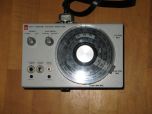
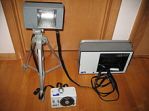

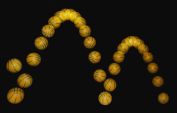
Fig [23] Fig [24] Fig[25] Fig[26]
the stroboscope uses rotating disc with spaced holes in between The speed of the disc changes as it is synchronize with the dic to create movement. over the years, this discovery has impacted on many developments such as films research and testings. [14]
The Zoetrope
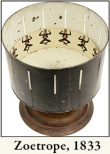
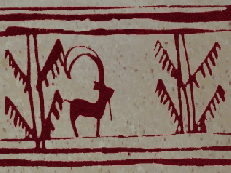
Fig [33] Fig [ ]
The and earlier image of what might have been a Zoeotrope is a recording of animation painted on an earthenware bowl/ This was believed to have been recorded in Iran over 5000 years ago. It showed the image of a goat jumping up to eat a leaves of a plant. This appear to be one of the earliest picture of animation ever recorded. it is considered to predecessor the development of the Zoetrope. This bowl is decorated in a series of images portraying a goat jumping toward a tree and eating its leaves. An even earlier development of what appear to be a form of soeotrope was discovered by
John Bate made reference to this phinamomina in his book. “The Mysteries of Nature and Art”. He describe the gadget as a circular wheel which turned inside a glass. It consisted of picture cards on the four spokes of a wheel which was turned around by heat inside a glass or horn cylinder.
Fig [33]
The praxinoscope was an animation device, the successor to the zoetrope. It was invented in France in 1877 by Charles-Émile Reynaud. Like the zoetrope, it used a strip of pictures placed around the inner surface of a spinning cylinder.
The praxinoscope improved on the zoetrope by replacing its narrow viewing slits with an inner circle of mirrors,[1] placed so that the reflections of the pictures appeared more or less stationary in position as the wheel turned. Someone looking in the mirrors would therefore see a rapid succession of images producing the illusion of motion, with a brighter and less distorted picture than the zoetrope offered.
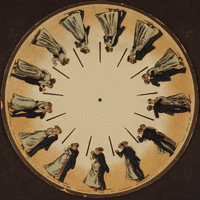
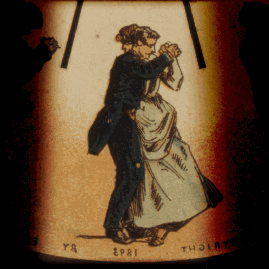
Fig[ 35 ] Fig[ 36 ]
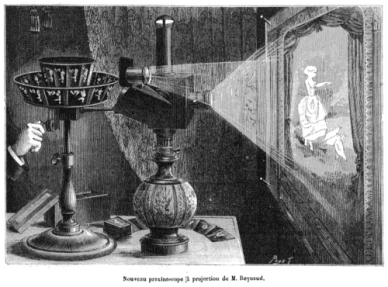
This brought the technique of many images that are slightly different in a row on a circular open tube that is attached to a handle the person that wants to view the moving images would spin the handle to make them move. Through slits just above the images around the tube the person would be able to see these images move.
Thomas Edison Thomas Edison invented the motion picture camera. A Stroboscope is used to make a moving object appear to be moving slow. It basically works with a rotating disc with evenly spaced holes in the line of sight between the viewer and the moving object as before. The rotational speed of the disc is changed and is then able to become synchronized with the movement of the ball say, making it slow this has been named the Stroboscope effect They are used in many forms of research as well as films testing the stresses of machinery
The Enchanted Drawing
history-of-animationA man named James Stuart Blackton used animation techniques to produce a short film. It documented the drawing process of characters, without ever showing the artist; this made it seem that the drawings simply appeared.
Stuart Blackton 1906
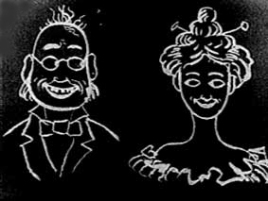
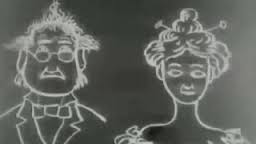
The Humerous Funny Faces
A short animation created by Anglo-American film producer James Stuart Blackton which proved hugely influential in the development of animated films in America. The film comes six years after his equally groundbreaking the enchanted drawing
The first animated film to be recorded on standard picture film. w\as the first animated film, saw the beginning o silent films. One such feather was. The Humorous phase of Funny Faces by is a silent animated cartoon by James Stuart Blakton
In 1829 Sir Isaac Newton made a real breakthrough in animation, when he improved on the Joseph Plateau’s invention of the Phenakistoscope. His technique has improved and has presented slightly changes, creating a difference in the circular tube. the when the handle tis turned it causes the image to move. The slits above the images makes it possible for the viewing of the images as the film passes wheels producing motion like viewing.
1908 Thomas Edison Eadweard Muybridge In 1872 Leland Stanford a race horse owner who had also been Governor of California discussed with other socialites, when whether or not when a horse galloped in order to prove did all four of the horses hooves leave the ground at the same time. This research impacted on the world of photographic The Image showed that when a horse leaped there become a leap the human brain perceived movement of images.
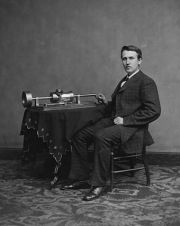
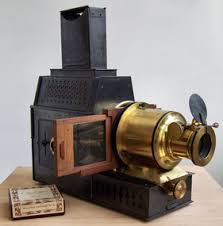
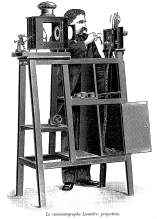
In 1872 Leland Stanford a race horse owner who had also been ggovernor of California discussed with other socialites, when a horse galloped all four of the horses hooves leave he ground at the same time. . Using individual images of a horse moving this debate was able to be answered as the images where put together illustrating what happens. Many different images of movement were created using this idea from animals to people doing all type of action sequences to show movement.
Eadweard Muybridge
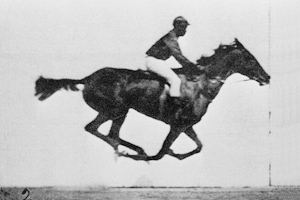
The Image showed that when a horse leaped there become a leap the human brain perceived movement of images. In 1872
The result
The results settled the debate once as it was proved that all four of the horses hooves, do. leave the ground all at once.
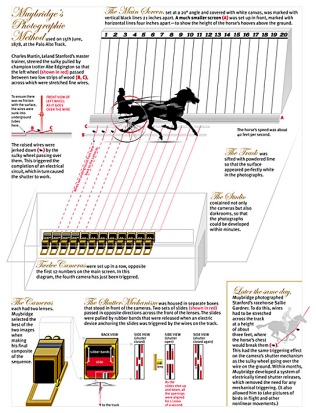
MAGIC LANTERN
The Magic Lantern is an image projector using pictures on sheets of glass. Since some sheets contain moving parts, it is considered the first example of projected animation.
The Magic Lantern, which uses hand drawn, images or drawn on a sheets this is then projected o sheets of glass. Which moves. Creating projected animation.
The Magic Lantern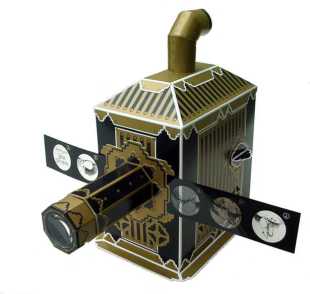
Research shows that the Magic Lantern by Joseph Boggs Beagle was in existences from around 400 Bc. It is believed that modern animation can be traced back to the discovery.of the magic lantern. The Magic Lantern is a small device used by showmen to entertain bystanders, by displaying semi-translucent slides. The slides at initial conception were not yet fully animated until around the end of the 17th century.
In 1887 H. W. Goodwin crated animation with his invention of the Celluloid Film. This film with the use of gum cotton and gum camphor.
By 1892, Charlie Emile Raynaud 1893, invented the Praxinoscope which uses turning mirrors, to reflect animated moving pictures uses turning mirrors where it poses a reflection of images at a rate of between 10 to 15 minutes. to create a moving images.
- Thomas Edison improvement of the celluloid film invented the Kinetoscopic, which produces moving pictures on walls. This film which passes over a series of wheels which produce s motion like viewing.
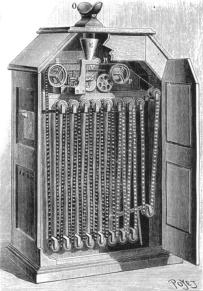
The Kinetoscope is an early exhibitor for motion pictures during the early centuries. It was designed for the viewing of films by Thomas Edison in 1899. The Kinetoscope has a viewing hole at the top through which audience can look to see the performance. It was deemed as the first cinematic video. it creates an illusion of movements created by a perforated sequential film, as it passes over a light source with a high shutter speed. this was further developed by French inventor Louis Le Prince, who built on the idea developed by Thomas Edison. The project was further enhanced by one of his employee William Kennedy Laurie Dickson in 1892. Dixon along with Edison further developed the Kinetoscope which became the innovation for the motion picture camera for commercial and other usage; this was its first publicly demonstrated at the Brooklyn Institute of Arts and Science on May 9 1893.
Celluloid Film
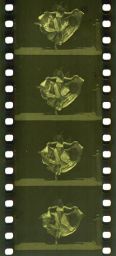
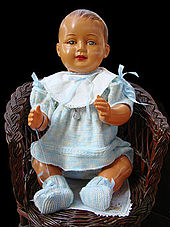
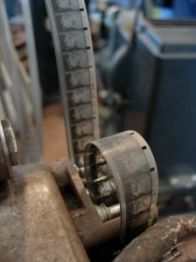
In 1887. H.W. Goodwin invented nitrate celluloid film, which is made of gum cotton and gun camphor.
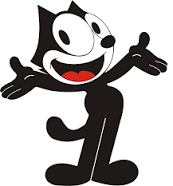
1919
FELIX THE CAT
Musical Mews and Feline Follies introduced Felix the Cat—often considered the first animated movie star.
1920
The most popular character and series of this time, Felix the Cat, started on the Feline Follies show from Sullivan’s studio. Otto Messmer not only created Felix, but he did the stories and directing on a schedule that made one film every two weeks.
1928
1928
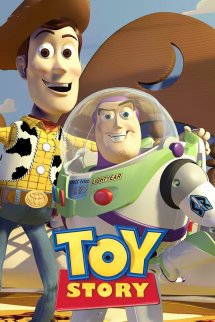

Disney did two Mickey Mouse animations, Plane Crazy and Galloping Gaucho without a distributor. He was working on the third animation, Steamboat Willie, when motion picture sound arrived. So he added sound to the third Mickey with the Powers sound system. It was not the first sound film though, Terry’s Dinner Time was released on Sept. 1st, but with unsynced sound. Steamboat Willie was the first sound animated film with synced sound. It made Mickey an international star, and launched the Disney studio of today. It also ushered in the new age of sound for animation.
1987
THE SIMPSONS
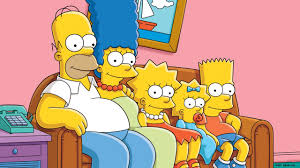
The Simpsons is an American adult animated sitcom created by Matt Groening for the Fox Broadcasting Company. It is the longest-running American sitcom, the longest-running American animated program, and in 2009 it surpassed Gunsmoke as the longest-running American scripted primetime television series.
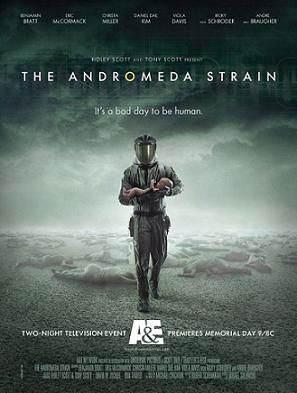
1982
Tron, A Disney feature has 15 minutes of computer animation for 235 scenes at a cost of $1,200 per second.
1988
Who Framed Roger Rabbit was released. Getting over $300 million, and it proved that animation, at least when combined with live action, was not limited to a children’s audience.
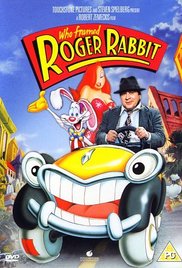
1989
Tin Toy wins the Academy Award. Directed by John Laseter and produced by Pixar it first computer animated film to win.
1992
Cartoon Network broadcasts in 2 million homes, and by 1995 it’s in the 22 millions.
SUPERMAN
It was the first feature length of its kind and first produced in color other companies such as Warner Brothers believed this film would destroy Disney and big poster ads around America predicting its demise, and promoting Popeye. But it ended up smashing all records, making four times more money than any other motion picture in 1938, grossing $6.5 million.
Popeye the sailor meets Sinbad the sailor in 1936, and Popey
Tom and Jerry.

Tom and Jerry:
The Movie received negative reviews from both critics and viewers. The film was criticized for the musical numbers, the voice acting, the overall tone, the increased amount of dialogue for tom and Jerry, and the lack of focus on the title characters. On Rotten Tomatoes, it scored 18% based on 11 reviewThe film made in 1993 but wasn’t well received by the critics, and I don’t believe it came close to the craziness of the original shorts that came from a time and place without critical
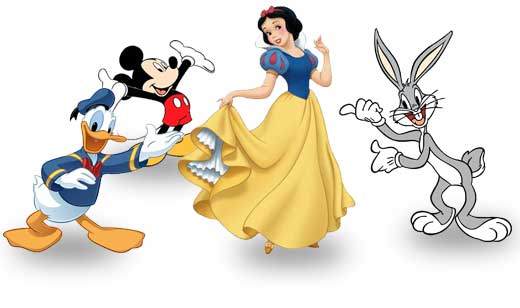
Over time there are new developments and adjustments made within the movie industry to improve the service and to provide the viewers with better film. One such change is made by Cinerella.
Cinderella is the technology used simultaneously projecting
images from three 35 mm projectors onto a large very curved screen.
The screen surface was made of hundreds of individual vertical strips of standard perforated screen material each about 7/8 inch[-22mm] wide that these strips would be angled to face the audience
used motion capture. Directed by the creator of the role
playing computer game Hironobu Sakaguchi the first
photo-realistic computer animated film and raised the bar
in what can be achieved in the medium.
With mixed review people felt the characters though very
detailed lacked emotion. It ended up making $85 million
dollars world wide.
NEW TECHNOLOGIES
The multiple camera is specializes in crating motion pictures. The camera uses traditional animation processes. It can creates a three-dimensional effect, although it is not actually stereoscopic.
At the University of Utah, and man named Ed Catnull developed a method of creating computer generated movies. It used scripting language.
In 1972, Apple computer company produced a method which can be used to create 3-D films, and in 1995 Toy Story was released as the first full-length 3-D film.
1993 The animation industry y not the end, now we have 5-D animation.
Conclusion
IMAX at that time making a quarter films share of the $302 million dollars in totally from less than 100 IMAX screens. It now is annually released each holiday season in IMAX cinemas.
It also helps the director to have more control over the way the film is created. To get face capture the actors wore Skull Caps which were fitted with a tiny camera positioned in front of their faces, then it is transmitted to computers. Weta special effects company From New Zealand which had Extensive work in the `Lord of the Rings` trilogy, employed 900 people just because of the large amount of data which was generated. It needed to be cataloged and stored and easily available to everyone responsible for the project.
To get face capture the actors wore Skull Caps which were fitted with a tiny camera positioned in front of their faces, then it is
transmitted to computers. A new cloud computer and Digital Asset Management system named Gaia had to be created by Micro soft especially for Avatar. And other studios like Industrial light and Magic where taken on the project to make sure it was finished Weta invented a system called Mari and it took 10,000 sqft Server Farms with 35,000 processors cores to render using some of the worlds most powerful computers
Zack Snyder the director of films 300,
and Watchman has ventured into the
world of computer animation with the very
latest 3D film released,` Legend of the
Guardians` even though the story doesn’t sound
too in-depth 300 with Owls, it has been likened with the way they have exploited the flying and
nature elements of the film, sounds very
intriguing and may be worth a look
REFERENCES
[1] https://www.youtube.com 4/11/2016
[2http//]www.dictionary.com/annimation<5/11/2016>
Beckerman, Howard (2003-09-01). Skyhorse Publishing Allworth Press Inc. p. 16 2003
[3] http://www.softschools.com/3/11/2016
[4] http://history-of-animation.webflow.io6/11/2016
[5] Charles Babbage: Pioneer of the Computer by Hayman Anthony .Princeton University Press, 1982
[27] Orthograp.languagesoftheworld.info/student-papers/the-history-of-english-orthographyReferences 11/11/16
[28]www.ancient-origins.net/artifacts-other-artifacts/ten-amazing-artifacts-ancient-world-002105 11/11/2016 [6]
[30]www.ancient-origins.net/artifacts-other-artifacts/ten-amazing-artifacts-ancient-world-002105,<13/11/16> ]
- http://animation.filmtv.ucla.edu/NewSite/WebPages/Histories.htm
- https://www.youtube.com/watch?v=Q3bbsDJWlXQ
- http://en.wikipedia.org/wiki/Film_stock
- http://www.pinterest.com/pin/529102656193938120/
- http://movie.douban.com/subject/4059057/
- http://automanga.sourceforge.net/Doc/node3.html
- http://my.smithmicro.com/tutorials/2360.html
- http://www.business2community.com/social-buzz/x-well-known-cats-worldcatday-0970104
- http://en.wikipedia.org/wiki/Laugh-O-Gram_Studio
- http://archives.frederatorblogs.com/refrederator/2006/07/20/turning-chicken/
- http://gifsoup.com/view/386773/steamboat-willie-ducky.html
- http://archives.frederatorblogs.com/refrederator/category/uncategorized/page/7/
- https://www.tumblr.com/search/merrie+melodies
- http://rebloggy.com/post/gif-tree-disney-shorts-dance-flowers-30s-1932-silly-symphonies-oscar-winner/43529002709
- http://mycinderelladreams.tumblr.com/page/2
- http://www.pictureshowman.com/articles_genhist_censorship.cfm
- http://ficoforums.myfico.com/t5/media/v2/gallerypage/user-id/459194/image-id/2045i45CAD232D6243C3A
- http://giphy.com/gifs/4fWIFukyf7voY
- http://theworldofcomputingcomp1220uwi.weebly.com/ivan-sutherland.html
BIBLIAGROPHY
[1] https://www.youtube.com 4/11/2016
[2] Beckerman, Howard (2003-09-01). Skyhorse Publishing Allworth Press Inc. p. 16 2003
[3] http://www.softschools.com/3/11/2016














